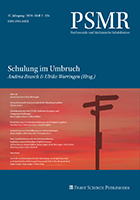Facial features that are attractive in real life are also perceived as attractive in virtual figures, especially prominent cheekbones predict attractiveness, Sabrina Sobieraj and Nicole C. Krämer (Media Psychology University Duisburg-Essen) report.
"Nowadays, virtual figures are widely used in the Internet, e.g. on commercial webpages to support customers or in Online Games by means of character selection. As in face-to-face interaction attractiveness has also been shown to be an important aspect in virtual environments, e.g. attractive avatars are expected to show better performance in World of Warcraft.
Based on the finding from research on facial attractiveness in real life and the perception of attractiveness based on the what-is-beautiful-is-good stereotype Sobierajs´and Krämers´study aimed to give more detailed information on the perception of virtual faces.
Concerning physical attractiveness the research partly shows that facial features in females and males that are attractive in real life are also perceived as attractive in virtual figures. Additionally Sobieraj and Krämer can make suggestions on beneficial combinations of facial features that appear most attractive in males and females, e.g. long chins in females rated separately as unattractive become attractive in combination with prominent cheekbones.
Furthermore, the psychologists found that the what-is-beautiful-is-good stereotype can also be observed for virtual figures indicating that they are liable to the same person perception processes than humans."























